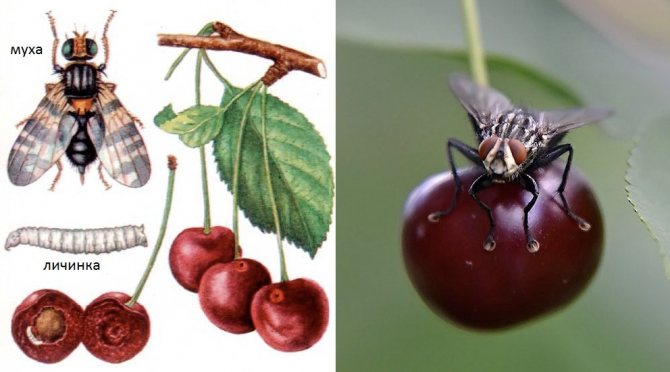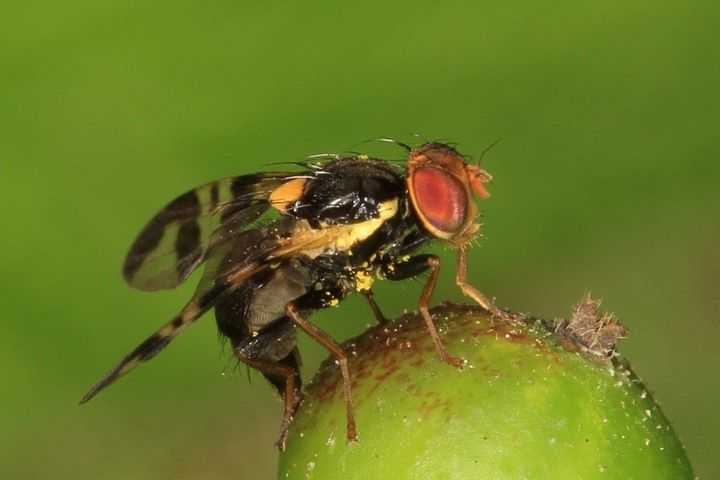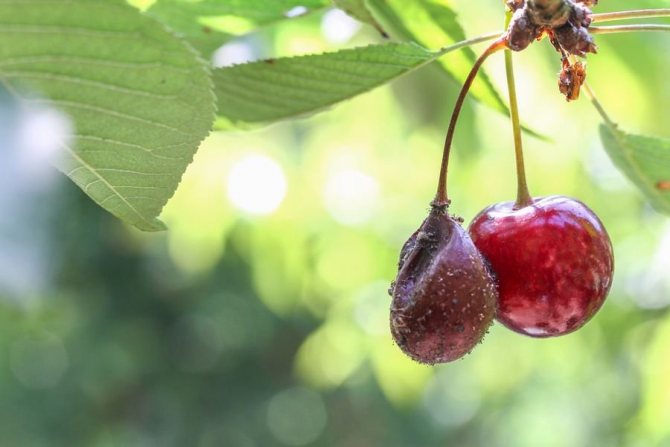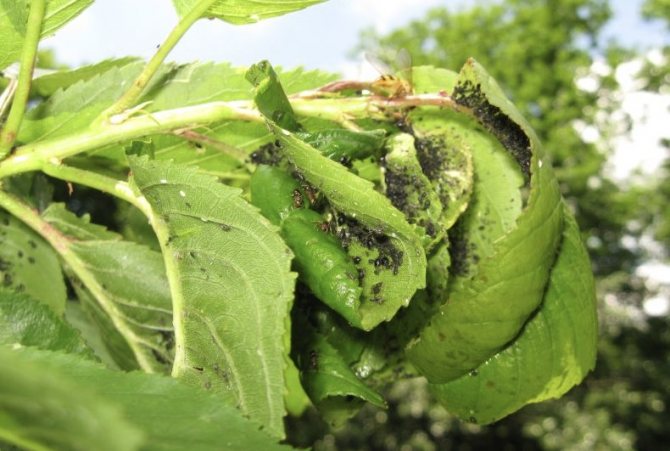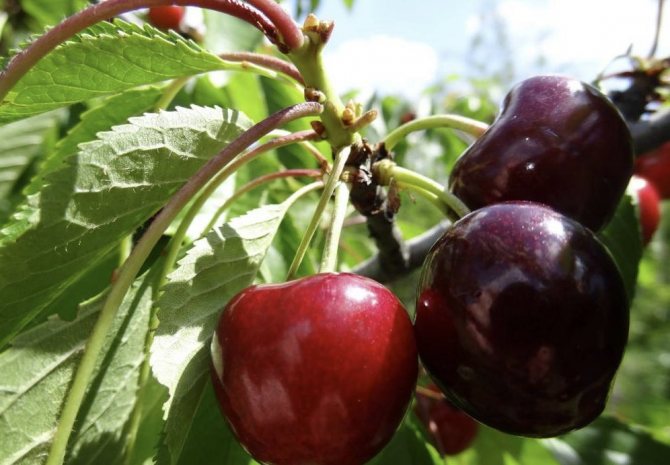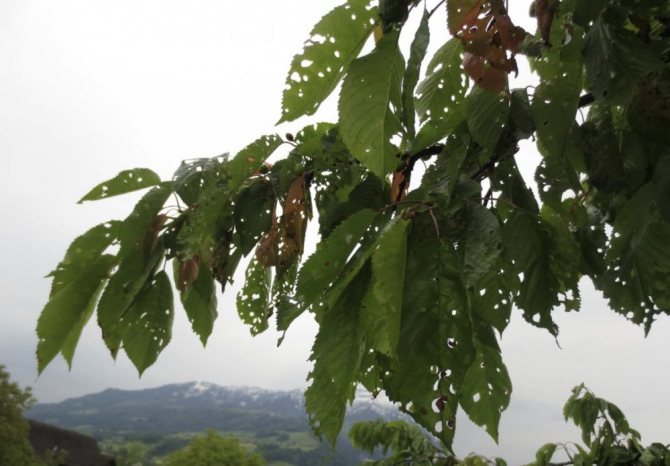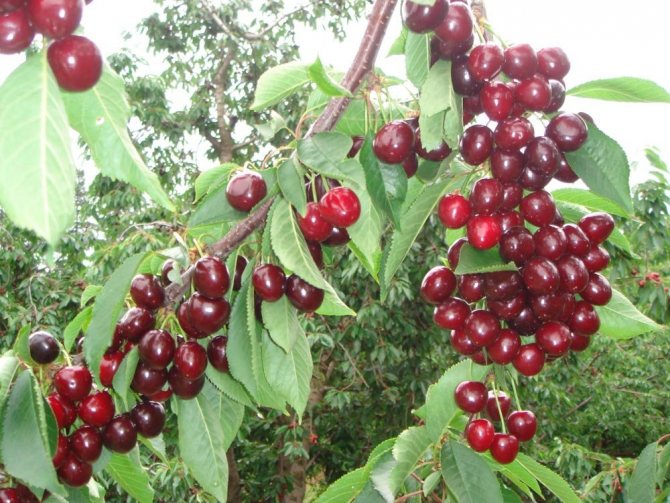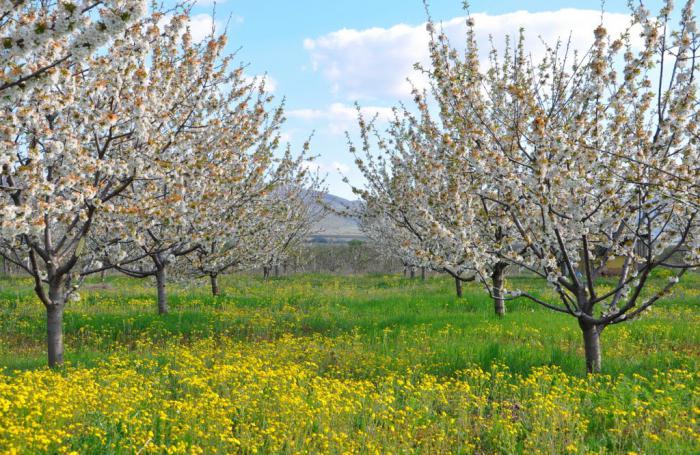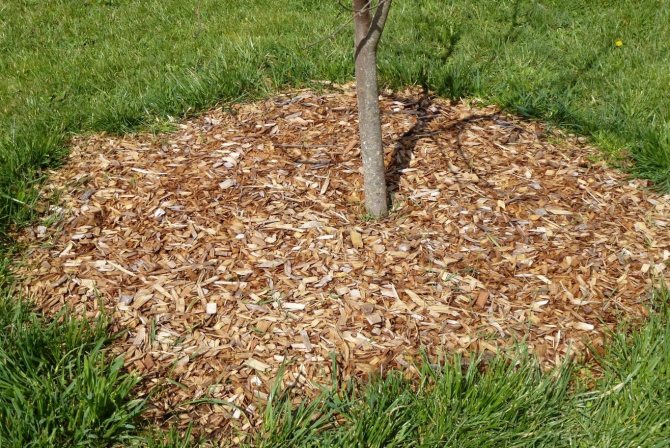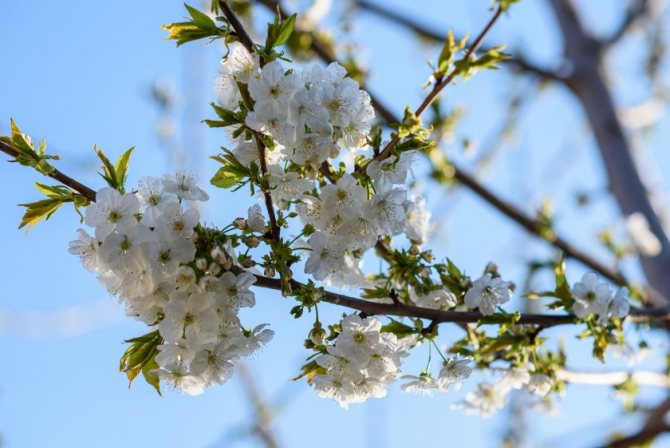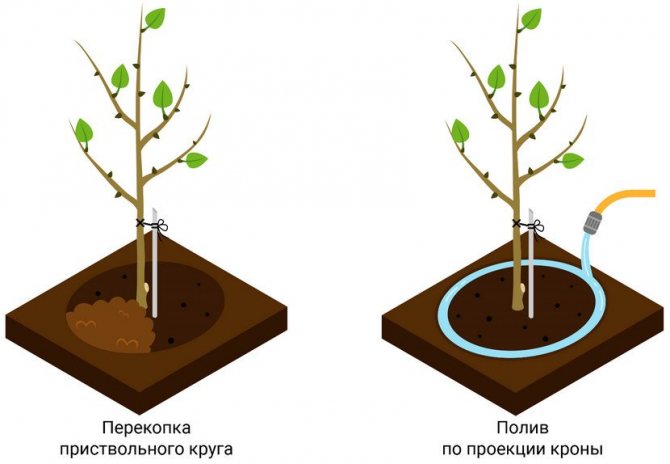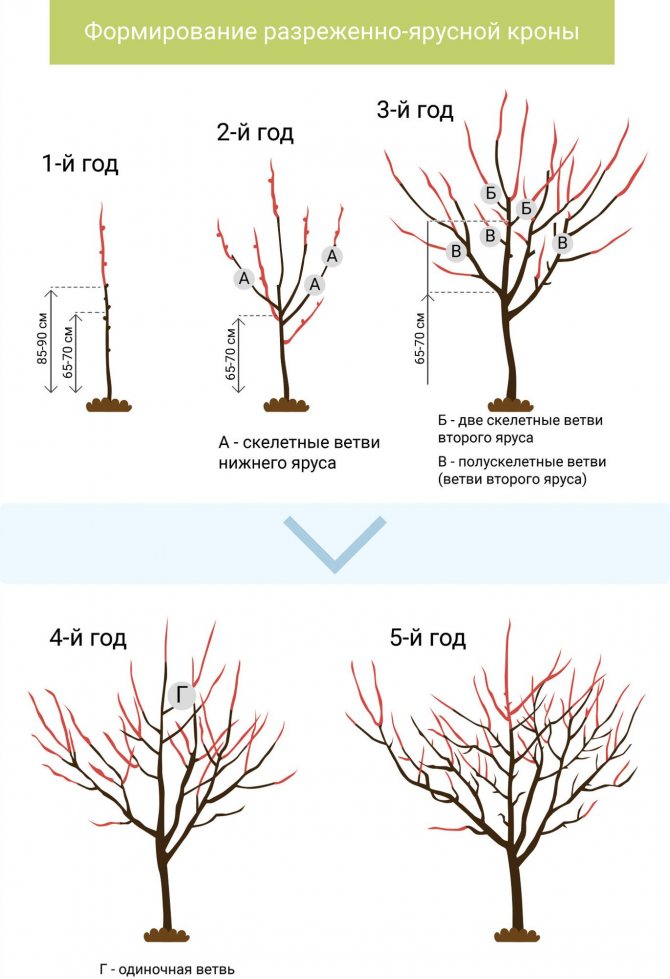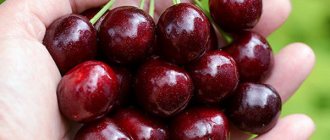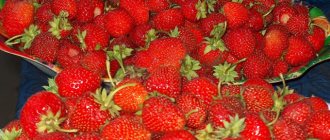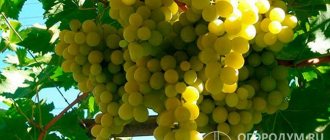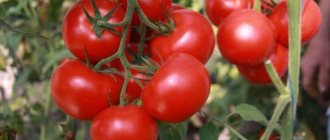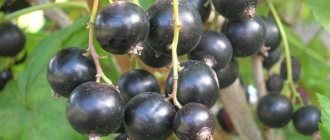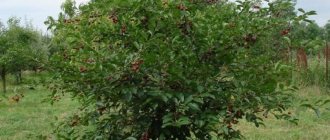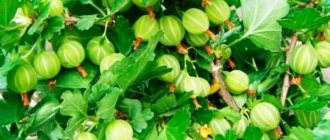Sweet cherry (Prunus avium), also called bird cherry, is a member of the pink family. It is interesting that in a large number of languages, cherry and cherry mean the same thing, in this regard, the famous Chekhov play in various countries is called "The Cherry Orchard" and there is no mistake, since these cultures are considered closest relatives. In recent years, gardeners' interest in cherries has increased significantly. This is due to the early ripening of the berries, their valuable taste and good yield, higher than that of cherries. They love her not only for her sweet juicy taste, but also for those beneficial properties that she can give to the human body and bring benefits to his health. One of the main beneficial qualities of cherries is a completely unique set of antioxidants, among which anthocyanin glycosides should be distinguished first of all, which give it a deep rich color. In addition to color, they endow berries with anti-inflammatory properties that will be beneficial for people with arthritis, fibromyalgia, and joint pain. Sweet, juicy berries, with a barely perceptible tart taste, cherry berries are dense, glossy with a variety of colors from dark red to pale yellow. One of the largest varieties of sweet cherries is the Bull's Heart. Bovine heart is one of the largest cherry varieties of domestic selection. It owes its name to the size and shape of the fruit, which they take when ripe. Among the main advantages of sweet cherries are the Bull Heart: very attractive large berries with excellent taste, abundant fruiting, resistance to fungal diseases, high yield and frost resistance. Today we will tell you all about the Bull's Heart cherry variety.

Description of sweet cherries Bull heart
After planting, the large-fruited Bovine Heart sweet cherry demonstrates rapid growth rates. By the age of five, an abundant crown is already forming. After this period, growth processes slow down.
Fresh articles for gardeners, gardeners and florists
Pruning cherries in autumn for beginners in pictures step by step
What to plant after tomatoes next year
What to plant after strawberries in autumn
Planting garlic in autumn before winter in Siberia
As it matures, the Bovine Heart cherry tree height varies from three to five meters. The crown has a pyramidal shape with an average degree of foliage.
The leaf plates are large, with a dark green color. They have a lanceolate shape with pointed tips and double serrate edges. The rounded base is attached to a sturdy short petiole.
Ripe berries reach a weight of up to 12 g. They are covered with a dark red dense skin with a pleasant wine tint. The very juicy pulp differs from the rind in a lighter tone. It is sweet, with a pleasant, slightly sour note that gives the fruit a spicy taste. The bone is removed with little difficulty.
Small white flowers are combined into inflorescences. Each of them includes from two to four buds.
After planting in a place prepared in the garden, the Bull's Heart sweet cherry begins to bear fruit quite early, on average, already in the fourth year.


Follow-up care of the culture
It should be borne in mind that planting and caring for the Bovine Heart cherry does not create difficulties for gardeners. The following activities are carried out:
- Watering an adult tree is required in hot weather four times during the growing season. Young plants need to be watered more frequently.
- Loosening of the trunks is carried out as the crust forms. Weeds are removed at the same time, and then the soil is mulched.
- Top dressing of Bull's Heart cherries involves the spring application of ammonium nitrate. In July, when the harvest has already been harvested, phosphorus-potassium fertilizers are used. In autumn, it is recommended to sprinkle rotted compost into the tree trunks and loosen the soil.
- Pre-winter preparation is carried out in late autumn. The sweet cherry is watered, the trunks and lower large branches are whitewashed with lime.
- Young trees are protected from the cold by wrapping them with spruce branches. In winter, the snow around the trunks is trampled down from the rodents, adding it, if necessary, to the near-trunk circles.
Annual spring pruning, forming a crown, is required for Bovine Heart cherries from the age of two. The shoots are shortened by a third of the length. In autumn, sanitary cutting of damaged branches is carried out.


Diseases and pests, methods of control and prevention
Under unfavorable external conditions, irregular thinning of the crown, the Bull's Heart can be exposed to serious diseases and the development of pests. At the first sign, the fight to save the trees must begin.
Sweet cherry has long been a full-fledged inhabitant of almost every garden. It is unlikely that you can find a person whose berries are not included in the list of their favorite summer treats. Cherry fruits are an excellent source of vitamins and minerals. It is also noteworthy that these berries are low in calories, only 52 kcal per 100 g. But despite this, they will quickly help satisfy hunger and restore strength, due to the high content of glucose and carbohydrates. Sweet cherry with an unusual and memorable name Bull's Heart is one of the gardeners' choices. ...
The main advantages of the Bull Heart cherry variety
- excellent taste characteristics of fruits and their considerable size;
- very high resistance to low temperatures (and even to severe frosts);
- immunity to one of the most common cherry diseases - coccomycosis;
- very high yield rates.
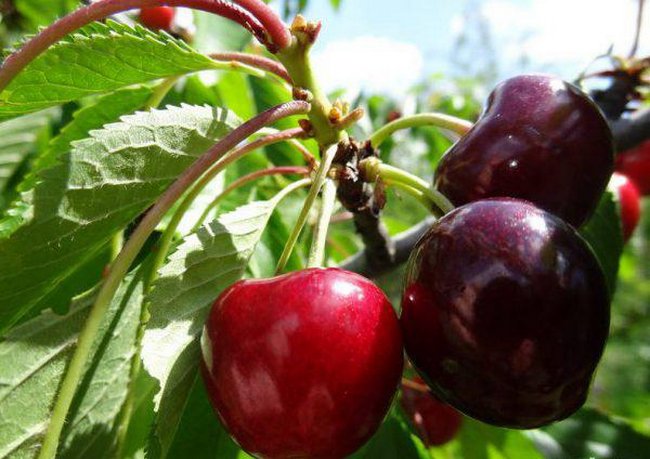

Sapling selection
The tree is unpretentious; in order to maintain a good level of fruiting, several nuances must be taken into account and observed throughout the entire period of cherry growth. When buying a seedling, special attention is paid to the condition of the root system. There should be no damage on it. The roots of a healthy tree are massive and large.
It is advised to make a purchase in local shops or nurseries - in them the tree is prepared for the weather conditions of the region.
Pollinators provide a good harvest. To do this, you need to attend to the acquisition of several cherries at once and plant them at a short distance from each other. You can buy different varieties, taking into account the requirement of their simultaneous flowering.
Planting cherries Bull heart
Since the Bull's Heart cherry tree is of medium size, the optimal distance between seedlings in one row will be 3-3.5 meters. Row spacings, for your own convenience and in order for the trees to have enough nutrients, need to be made wider. The best option would be a space of 4.5-5 meters.
A pit for planting cherries is prepared in 2-3 weeks. Its depth should be twice the roots of the seedling, about 60 centimeters. The width is the same. The upper and lower layers of the soil must be scattered in different piles, the upper one must be mixed with 2-3 buckets of organic fertilizers and filled back into the pit in the form of a mound. Until the immediate time of planting cherries, this soil will sit down and it will be convenient to spread the roots of the tree on its surface. In addition to fertilizers, a stake should be dug into the bottom of the pit. It must be strong enough so that the seedling tied to it later is reliably protected from the wind and from heavy snow melting in the spring.Before planting, a cherry sapling must be very carefully inspected again. If there are dried roots, you need to leave the seedling in water for 10 hours and only then plant it. The planting depth of the seedling should be such that the root collar in no case turns out to be dug in soil. In this case, other trees may begin to grow from the trunk, which will interfere with the growth of the cherry. You need to bury the seedling gradually, shaking it occasionally, in order to fill the space between the roots well. The soil is well compacted and watered abundantly (up to 30 liters of water can be used).
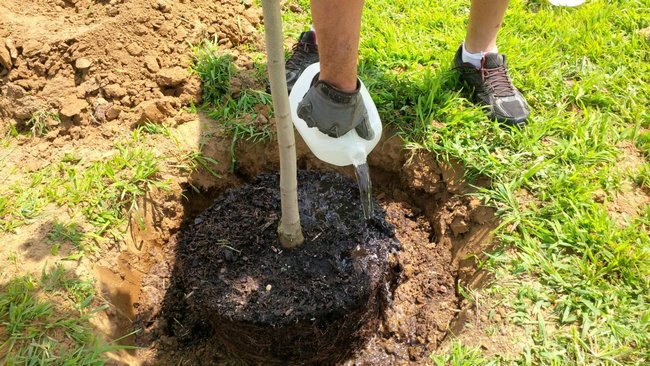

Growing conditions
The tree loves moisture, so watering should be abundant, but not frequent - once a month. It is necessary to take into account weather conditions and monitor the condition of the soil. Up to three buckets are poured under a young tree, but twice as many under an adult cherry. The procedure is performed from the moment the foliage appears until it completely falls off.
In the first year of growth, the tree does not need additional feeding. But then you will need to make fertilizers containing nitrogen. It is allowed to feed with organic compounds in the form of rotted manure diluted with water.
From mineral compositions, superphosphates and saltpeter are suitable. They are introduced periodically, in small quantities. If the acidity of the soil is high, it can be reduced with lime.
Watering cherries Bull's heart
Any variety of cherries needs a sufficient amount of moisture and sunlight, but watering the Ox heart must be done with care, because moisture stagnation in the root zone will stimulate cracking of the peel of the berries. Soil moistening is carried out according to weather conditions, but at least 1 time per month. At the same time, 30 liters of water is used for each young tree; for adult crops, the amount of irrigation liquid is increased.
To prevent the formation of a dense crust, the soil is loosened after watering, and then mulch from peat or compost is laid. These materials will retain moisture and prevent weeds from growing.
Advice!
Be sure to water the crop in the fall, which will create a moisture reserve for the winter.
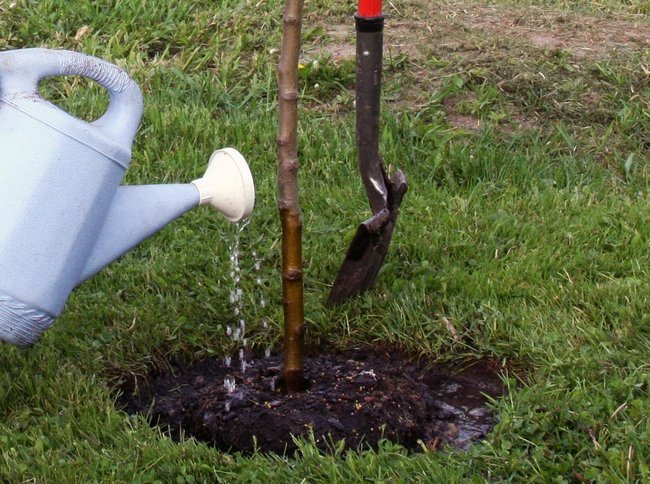

Fruit characteristics
The berries are large, weighing from 7 to 10 grams each. Outwardly, they look attractive, the skin is dark, almost black, the pulp is juicy, red in color.
Although the peel is dense, it is not able to protect the berries from damage and dents during transportation.
Fruits are even, kept on short stalks. If the crop is harvested gradually, then ripe berries calmly hang on the branches for another month, almost without changing their quality.
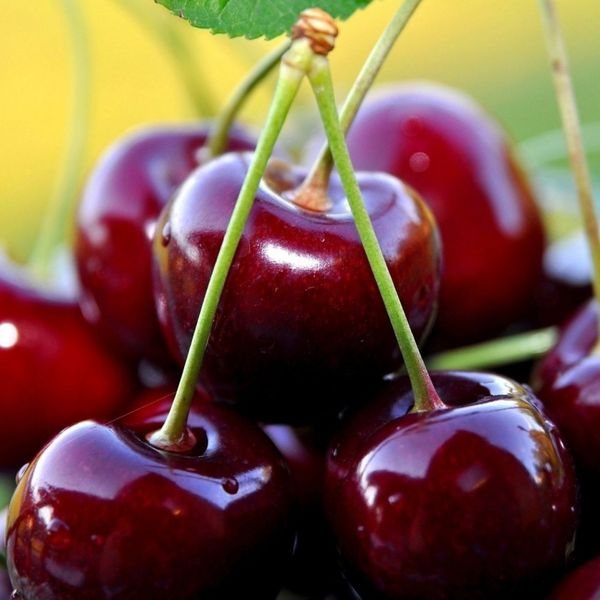

Berries of the variety are large, weigh about 7-10 grams
Berries are used fresh and canned. The sugar and acid content in them depends on the weather conditions and the care provided for the tree.
Cherry Formation Bull Heart
It is relatively easy to care for a sweet cherry grown in the garden. A seedling planted in the spring before the buds swell, needs formative crown pruning. To do this, you need to select several skeletal branches, and the remaining ones are cut into a ring, while there should be no stumps left. Places of cuts need to be smeared with garden varnish. If you did not have time to carry out such a pruning before the sap flow begins, then it will need to be done only next spring. In older plants, formative and sanitary pruning is carried out in the spring, and it should be done before sap flow begins. After the outside air temperature rises to 18 degrees, it is necessary to carry out preventive treatment of cherries, as a result of which all pests and pathogens that have hibernated in the surface of the trunk circle and in the bark of the tree will be destroyed.
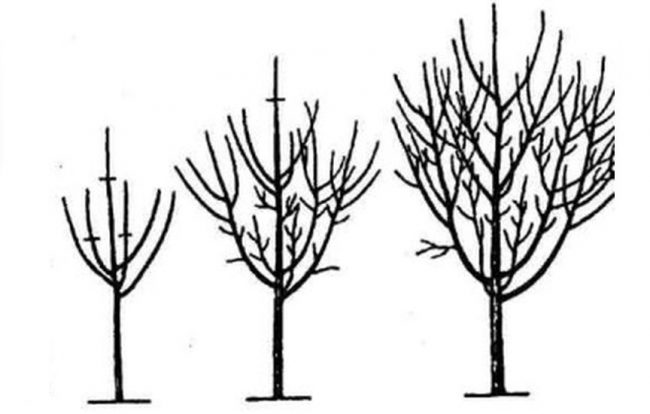

Care features
Bull's Heart belongs to rather unpretentious varieties, but requires certain care rules.
Watering
Sweet cherry is a very moisture-loving plant. Of course, do not flood the tree with water uncontrollably, otherwise it can lead to cracking of the berries. Stick to the middle ground so that the soil around the roots is always moderately moist. Usually watering is carried out once a month, but its frequency should be adjusted taking into account weather conditions. For a young plant, up to 3 buckets of water are used at a time, as the cherry grows, this amount is increased. For an adult fruiting tree, it can reach 6.
After watering, the soil is loosened and mulched with compost, peat or other materials, which will retain moisture and provide additional nutrition to the roots. Cherry is watered from spring to autumn (until the leaves fall).
Autumn watering is considered very important, since it is the water obtained during this period that will become the moisture reserve for the winter period.
A beautifully designed trunk circle when mulching can not only provide tree care, but also make your garden unusual
Top dressing
The nutrients that the seedling receives when planting will last for about 3 years. At the same time, in order to favorably affect the growth of the tree, in the second spring after planting, it is possible to make additional feeding with a small amount of nitrogen fertilizer, its amount should not exceed 120 g per 1 m 2 of soil. In subsequent years, you can fertilize with ammonium nitrate, which will give the cherry additional strength during the growing season. And most often, manure diluted in water is used to feed an adult tree (up to 10 liters per 1 m 2). But this is done no more than once every 2-3 years. In autumn, organic fertilizers can be used.
Remember that the size of the roots of an adult tree is on average 1.5 times the projection of the crown on the ground - this will help you determine the necessary area to care for cherries.
Crown formation
This process takes place during the first few years, starting from the second year after disembarkation, and always in the spring. When shaping the crown, it is necessary to thin out the branches and shorten those that are weaker. In the future, the shape of the crown is maintained by pruning long shoots. It is important to pay attention to how the main conductor grows, it must be even and have no competitors.
Additionally, in spring and autumn, they carry out sanitary pruning of branches and shoots, which can negatively affect the growth of the tree. These include sick, deformed, dried, growing inside the crown. Places of cuts are treated with copper sulfate.
Video: pruning adult cherries
Preparation for wintering
When preparing cherries for winter, it is necessary to water them well so that they do not experience a moisture deficit during the dormant period. This process must be supplemented with mulching, which is done after 2-3 days. This will keep water and nutrients in the soil and help protect the root system from cold temperatures. To protect the trunk from pests, rodents and sunburn in winter, its lower part is painted with lime and covered with spruce branches or birch bark. It will be useful to additionally cover small seedlings with boards of small thickness.
When snow falls, be sure to sprinkle it on the trunk and the space nearby, this will also create additional thermal insulation.
Mulching and whitewashing are mandatory measures when preparing cherries for winter
Diseases and their treatment
Here, the gardeners will have good news - this cherry variety is almost completely resistant to diseases from which stone fruit crops suffer, including such a complex one as coccomycosis.
Coccomycosis is a dangerous fungal disease. It is characterized by the fact that in late spring or early summer small brown spots appear on the leaves, which gradually merge into larger ones. In this case, the leaves turn yellow and dry out. Fruits can also be amazed - with the same signs, they either do not have time to ripen and dry out, or their appearance suffers greatly.Spores of the fungus ripen on the inside of the leaf under white growths. Coccomycosis additionally causes early shedding of diseased leaves, and this is dangerous because a weakened tree can freeze even before the onset of real cold weather.
If the cherry is still sick, then the following treatment should be carried out (all proportions are indicated for 10 liters of water):
- During the entire treatment process, the affected branches, leaves, fruits are collected and burned. This is to minimize the spread of the fungus.
- During the period of swelling of the kidneys, spraying with Abiga-peak (45-50 g), 3% Bordeaux liquid (300 g of copper sulfate and 450 g of quicklime) or copper chloroxide (40 g) is carried out.
- After the buds are set, the treatment is done with Horus (3 g).
- When the harvest is complete, the trees are sprayed with 1% Bordeaux liquid (100 g of copper sulfate and 150 g of quicklime).
Photo gallery: external signs of sweet cherry coccomycosis
Diseases and pests of sweet cherry Bull heart
It is safe to say that this cherry variety is very resistant to those diseases from which trees and shrubs of this type often suffer. But still there is one disease from which it is not always possible to save the berry - this is coccomycosis. This disease is caused by a fungus and is characterized by the fact that at the beginning of summer brown spots begin to appear on the leaves, over time they become larger, begin to merge into one large spot. At the same time, the leaves begin to fall off. This disease is dangerous because there are no leaves left on the tree at all, it weakens and can dry out.
If any signs of this disease have been noticed, treatment should be started immediately. The most important thing to do is collect and burn all affected parts of the tree. This is done in order not to infect neighboring bushes and trees. Otherwise, there is a possibility that not a single plant will remain in the garden.
For the purpose of prevention, even during the period of bud opening, it is necessary to spray the tree with special preparations. Also, processing must be carried out additionally in the middle of the season and after full harvest. If these conditions are met, then you can not worry about the harvest and other bushes and trees that grow in the neighborhood.
How to care?
Caring for this cherry variety does not require special skills and knowledge. This type is quite unpretentious.
- Regular watering is a prerequisite. For a young tree, one watering is enough for up to 3 buckets of water, 10 liters each, every year this amount needs to be increased, but it should be no more than 6 buckets in one procedure. The optimal watering schedule for seedlings is once every 30-35 days. However, it should be noted that if it is very dry or, on the contrary, rainy weather outside, this schedule will need to be adjusted. It is very important to water the tree in the fall, because it is this water that becomes the reserve of all moisture for the winter.
- The tree must be systematically fed with fertilizers (every 2-3 years). And when planting a seedling, you need to fertilize the soil in the hole and around it with humus or bird droppings, this will make it more likely that the tree will take root easier.
- Do not forget about the formation of the crown, this is also very important. It is necessary to start forming the crown the next year after planting. The main stem should be straight and strong enough. There are several branches on it, of which you need to choose 2-3 of the strongest ones, and remove the rest. The next year, it is necessary to carry out the same procedure with new shoots on the main stems. Crown formation is performed every new season. This is done so that the crown of the tree is not too branched, and all the fruits have enough food and water.If in the first year after planting the tree has grown quite a bit, then it is more advisable to postpone the formation of the crown for another year, so that the plant becomes a little stronger.
- It is necessary to properly prepare trees for wintering, be sure to protect the bush from pests. After wintering, it is necessary to whitewash the tree, this is done so that it does not get sick.
This cherry variety has very large fruits - they can weigh up to 12 grams. Cherry begins to bear fruit in 4-5 years after planting, the ripening period for berries of this type is from early June to early August. Of course, the fruiting period largely depends on the weather conditions of the climate where the tree grows. In the same area, fruiting may differ from year to year. This is due to the weather conditions that were established in a particular season.


Reviews of cherries Bull heart
Among the main advantages of the variety, gardeners note the large size of the berries and high taste. The trees give a rich harvest, they are resistant to frost and the most common disease of sweet cherries - coccomycosis.
According to reviews, the main drawback of the variety is the absolute nontransportability of sweet cherries. The berries crack and lose their presentation; they are not stored for a long time due to their high juiciness. Also, cherries can crack if overripe, so the crop must be harvested in a timely manner.


We introduced you to one of the most popular varieties of sweet cherries called Bovine Heart. The variety is unpretentious, peculiar and gives unusually tasty fruits. If you try to grow it on your backyard, we are sure you will not regret it. Good luck!
Breeding history
A new, hybrid cherry variety was developed in the Soviet Union by Georgian breeders for cultivation in areas with hot climates. To date, sweet cherries of the Bull Heart variety are cultivated with great success in the central and black earth regions of the country. Gardeners speak with great love about the fruit crop and call it a cow's heart.
Reference! For the unusual name of the variety, the bright color of large fruits similar to the heart of a bull served.

